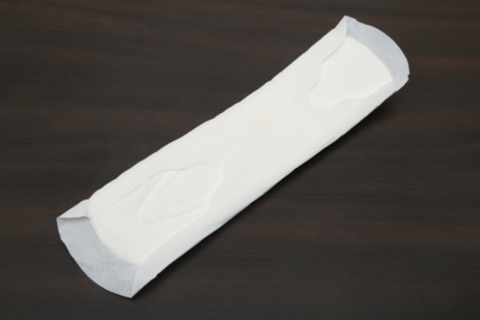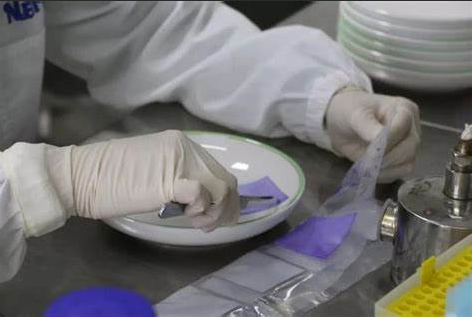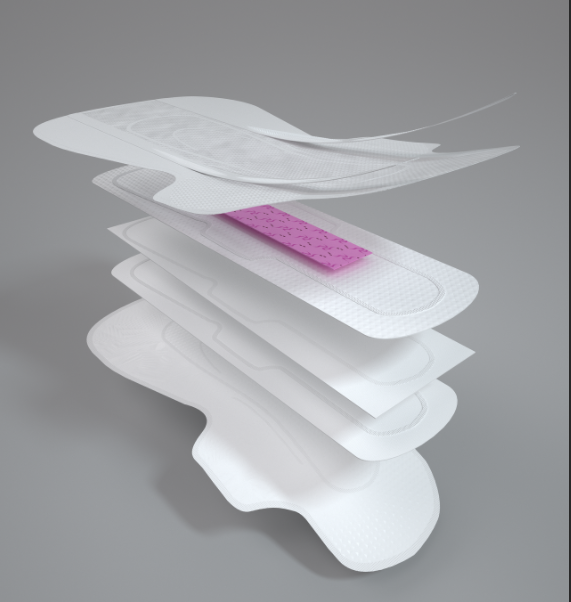The original standard stipulates that the total number of bacterial colonies of full width sanitary napkin products shall not be greater than 100200 and 400 / g respectively according to grade A, B and C, while the new standard stipulates that the total number of bacterial colonies of all ordinary full width sanitary napkins shall not be greater than 200cfu / g, and the total number of bacterial colonies of disinfection grade products shall not be greater than 20cfu / g. The current standard not only puts forward strict requirements for disinfection grade products, but also makes the provisions for ordinary grade products more reasonable and practical.

The original full width sanitary napkin standard stipulates that the coliform group should be less than 30 / 100g, while the current standard stipulates that the coliform group should not be detected. The detection of coliform bacteria in sanitary napkin products indicates that the raw materials or products used in the products may be infringed by sewage. In the bacteriological examination of water, the quantity of Escherichia coli is generally measured as a sign that the water is polluted by feces. Because feces contain a large number of E. coli, when the production water is polluted by soil or domestic sewage, the number of E. coli in the water will increase sharply. E. coli is a gram-negative non bacillus. When lactose bile salt fermentation tube produces acid and gas during detection, there are typical E. coli colonies on eosin methylene blue plate, and Gram staining is negative non bacillus, indicating the detection of E. coli group. E. coli exists in the human intestine and is a normal microorganism. Once it invades the human urinary system, it may cause urinary tract infection, and even cystitis or nephritis.

According to gbl5979-1995, pathogenic pyogenic bacteria shall not be detected in full width sanitary napkin products. The standard also points out that pathogenic pyogenic bacteria refer to Pseudomonas aeruginosa, Staphylococcus aureus and hemolytic streptococcus. In this way, compared with the original standard, the current sanitary napkin standard not only still needs to detect Staphylococcus and hemolytic streptococcus, but also adds the detection content of Pseudomonas aeruginosa.
Staphylococcus aureus, known as Staphylococcus aureus, is a Gram-positive cocci. It is arranged in a grape shape, without spores and capsules. It can produce hemolytic toxins on blood cell lipids, and the enterotoxins produced can cause acute gastroenteritis. Some can produce exfoliative toxins or epidermal lysis toxins, which can cause suppurative infection when the skin is injured. During the test, if there is suspicious colony growth on the agar plate, it is Gram-positive Staphylococcus, which can ferment mannitol to produce acid, and the plasma coagulase test is positive, it can be judged that Staphylococcus aureus is detected.
Hemolytic streptococcus is a chain of Gram-positive bacteria, which is spherical or oval. It can produce fibrinolytic protease and dissolve fibrin in human blood. The bacterium can often cause suppurative inflammation of skin and subcutaneous tissue, respiratory tract infection, scarlet fever, epidemic pharyngitis and other diseases. During the test, the microscopic examination shows Gram-positive Streptococcus, the hemolytic circle appears on the blood plate, and the streptokinase and bacitracin tests are positive, which can judge the detection of hemolytic streptococcus.
Pseudomonas aeruginosa is a gram-negative bacterium with no spores and obvious capsule. It can survive for a long time in wet places. After infection, it can cause chronic bronchitis, bronchiectasis and cystitis, and secondary infection to the traumatic surface. During the test, the tested sample is confirmed to be gram-negative bacilli after enrichment, isolation and culture. When the oxidase and Pseudomonas aeruginosa tests are positive, it can be judged that Pseudomonas aeruginosa is detected. If the Pseudomonas aeruginosa test is negative, but the liquefied gelatin, nitrate reduction gas production and 42°growth test are positive, it can still be judged that Pseudomonas aeruginosa is detected.

The strict standard of full width sanitary napkins is beneficial to the people, so that even ordinary products can be required by high standards, so as to ensure that ordinary women can use them at ease.
Comment(0)
You can comment after
SIGN IN